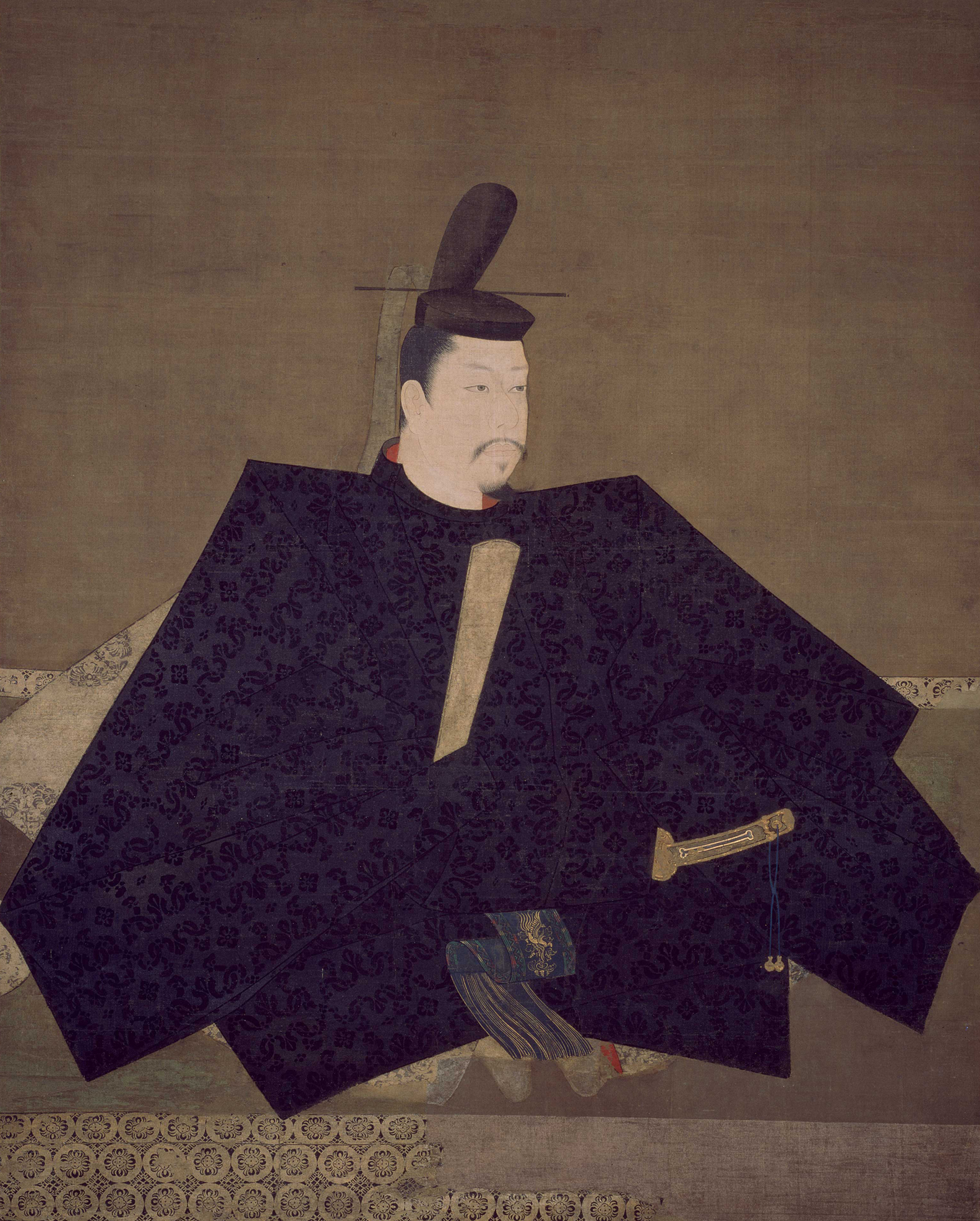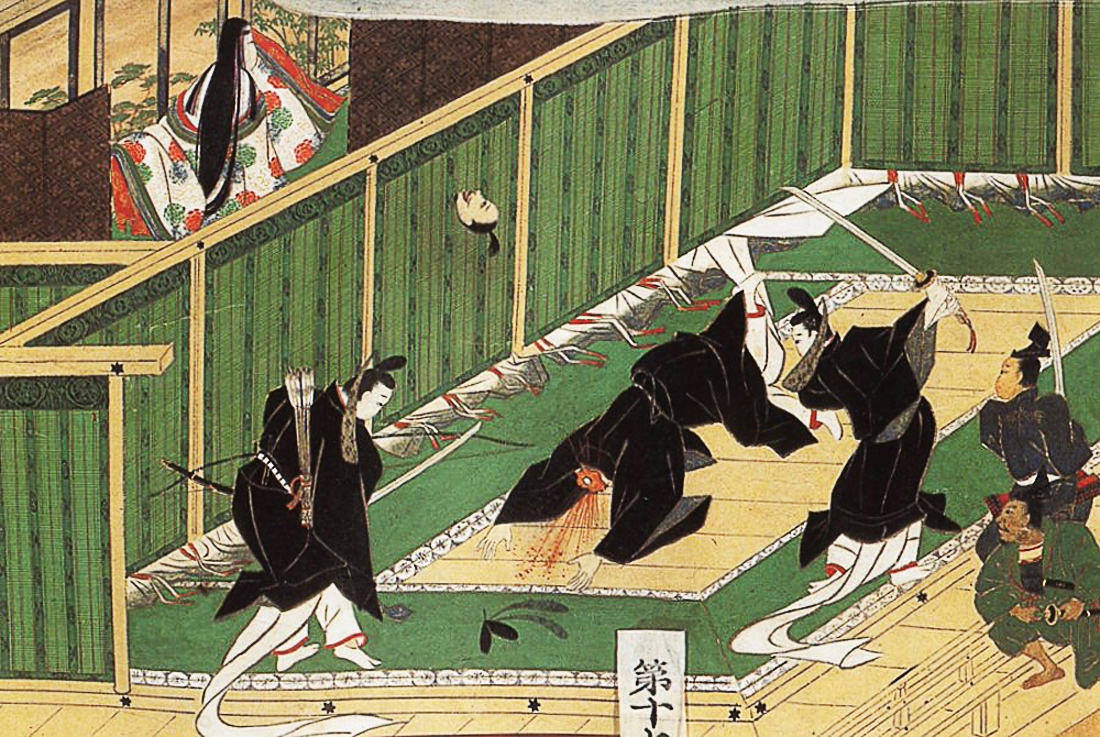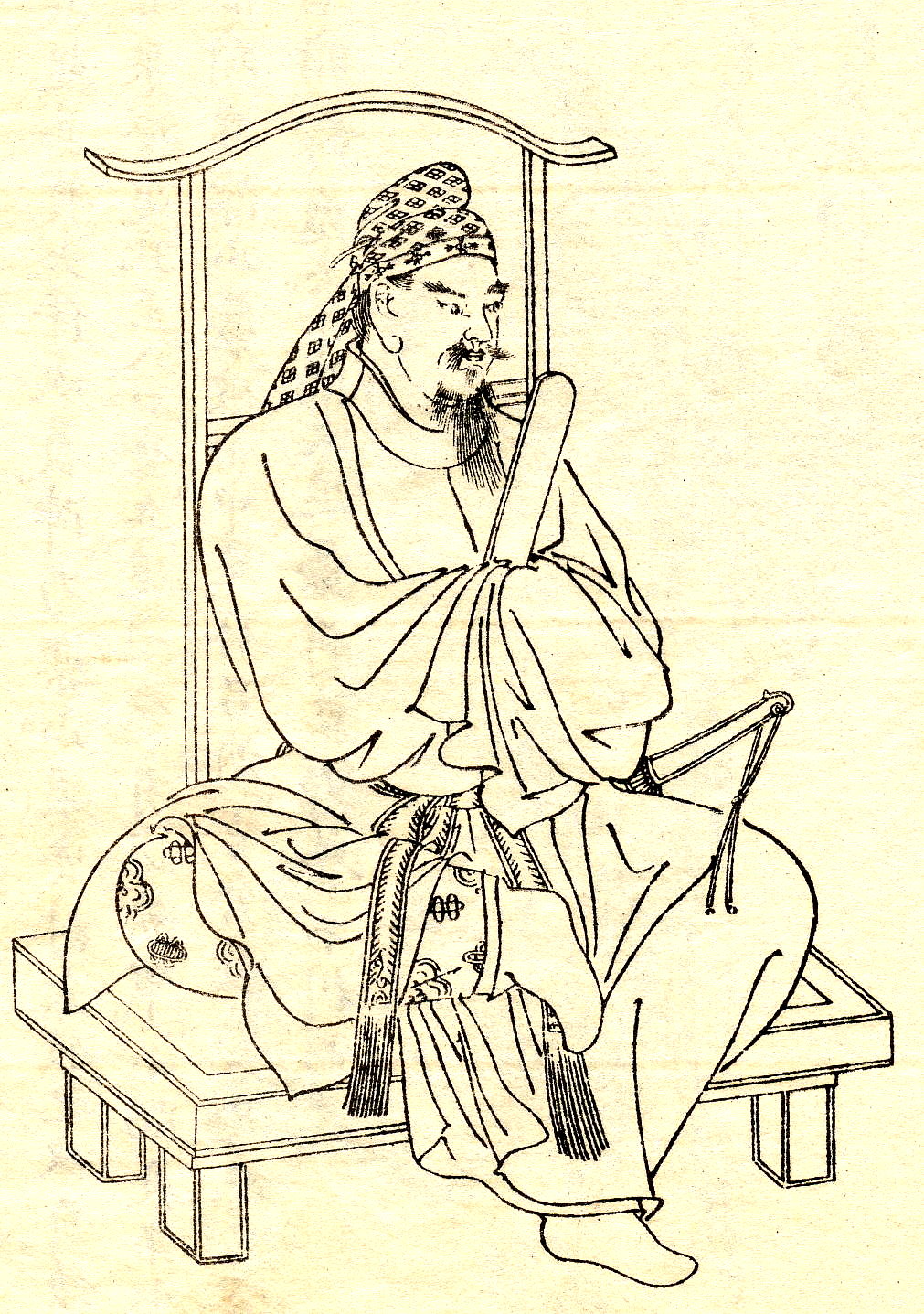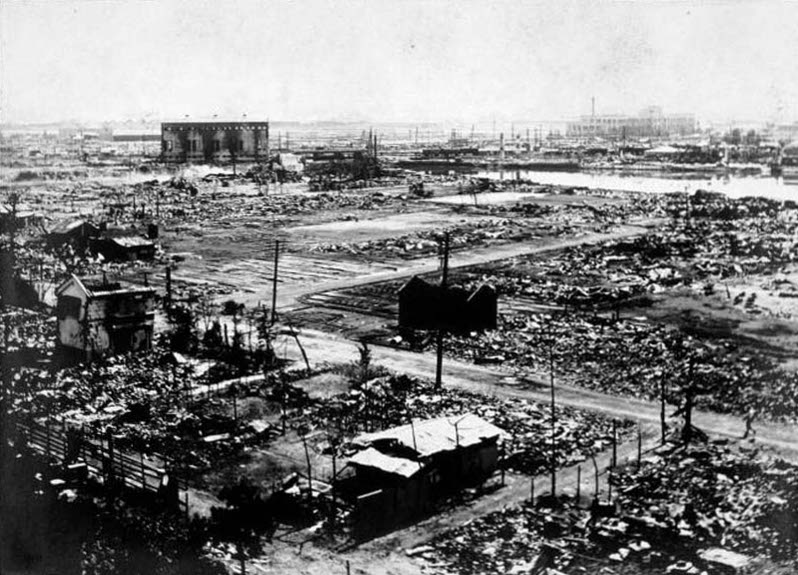|
Kamakura, Japan
, officially , is a city of Kanagawa Prefecture in Japan. It is located in the Kanto region on the island of Honshu. The city has an estimated population of 172,929 (1 September 2020) and a population density of 4,359 people per km2 over the total area of . Kamakura was designated as a city on 3 November 1939. Kamakura was Japan's '' de facto'' capital when it was the seat of the Kamakura shogunate from 1185 to 1333, established by Minamoto no Yoritomo. It was the first military government in Japan's history. After the downfall of the shogunate, Kamakura saw a temporary decline. However, during the Edo period, it regained popularity as a tourist destination among the townspeople of Edo. Despite suffering significant losses of historical and cultural assets due to the Great Kantō Earthquake in 1923, Kamakura continues to be one of the major tourist attractions in the Kanto region, known for its historical landmarks such as Tsurugaoka Hachimangū and the Great Buddha of Kamakura. ... [...More Info...] [...Related Items...] OR: [Wikipedia] [Google] [Baidu] [Amazon] |
Cities Of Japan
A is a local Public administration, administrative unit in Japan. Cities are ranked on the same level as and , with the difference that they are not a component of . Like other contemporary administrative units, they are defined by the Local Autonomy Law of 1947. City status Article 8 of the Local Autonomy Law sets the following conditions for a municipality to be designated as a city: *Population must generally be 50,000 or greater (原則として人口5万人以上) *At least 60% of households must be established in a central urban area (中心市街地の戸数が全戸数の6割以上) *At least 60% of households must be employed in commerce, industry or other urban occupations (商工業等の都市的業態に従事する世帯人口が全人口の6割以上) *Any other conditions set by prefectural ordinance must be satisfied (他に当該都道府県の条例で定める要件を満たしていること) The designation is approved by the prefectural governor and t ... [...More Info...] [...Related Items...] OR: [Wikipedia] [Google] [Baidu] [Amazon] |
Soga No Iruka
(died July 10, 645) was the son of Soga no Emishi, a statesman in the Asuka Period of Japan. He was assassinated at court in a coup d'état involving Nakatomi no Kamatari and Prince Naka-no-Ōe (see: Isshi Incident), who accused him of trying to murder Prince Yamashiro, a charge which Soga no Iruka denied. Soga no Emishi also committed suicide soon after his son's death, and the main branch of the Soga clan became extinct. Prince Naka-no-Oe later ascended the throne as Emperor Tenji, and Nakatomi no Kamatari was promoted and given the name Fujiwara no Kamatari. Legacy In 2005, the remains of a building which may have been Soga no Iruka's residence were discovered in Nara The National Archives and Records Administration (NARA) is an independent agency of the United States government within the executive branch, charged with the preservation and documentation of government and historical records. It is also task .... This discovery appeared to be consistent with the de ... [...More Info...] [...Related Items...] OR: [Wikipedia] [Google] [Baidu] [Amazon] |
Kashima Shrine
is a Shinto shrine located in Kashima, Ibaraki in the northern Kantō region of Japan. It is dedicated to , one of the patron deities of martial arts. Various dōjō of ''kenjutsu'' and ''kendō'' often display a hanging scroll emblazoned with the name "Takemikazuchi-no-Ōkami". Prior to World War II, the shrine was ranked as one of the three most important imperial shrines in the Shinto hierarchy, along with Ise Grand Shrine (伊勢神宮 ''Ise Jingū'') and Katori Shrine (香取神宮 ''Katori Jingū''). During the New Year period, from the first to the third of January, Kashima Shrine is visited by over 600,000 people from all over Japan. It is the second most visited shrine in Ibaraki prefecture for new year pilgrims. Introduction Kashima Shrine is located at the top of the Kashima plateau in south-east Ibaraki Prefecture, intersecting Lake Kitaura and Kashima Bay and in close proximity to Katori Shrine, which also has a strong connection to the martial arts. The shrin ... [...More Info...] [...Related Items...] OR: [Wikipedia] [Google] [Baidu] [Amazon] |
Ibaraki Prefecture
is a Prefectures of Japan, prefecture of Japan located in the Kantō region of Honshu. Ibaraki Prefecture has a population of 2,828,086 (1 July 2023) and has a geographic area of . Ibaraki Prefecture borders Fukushima Prefecture to the north, Tochigi Prefecture to the northwest, Saitama Prefecture to the southwest, Chiba Prefecture to the south, and the Pacific Ocean to the east. Mito, Ibaraki, Mito, the capital, is the largest city in Ibaraki Prefecture. Other major cities include Tsukuba, Ibaraki, Tsukuba, Hitachi, Ibaraki, Hitachi, and Hitachinaka, Ibaraki, Hitachinaka. Ibaraki Prefecture is located on Japan's eastern Pacific coast to the northeast of Tokyo, and is part of the Greater Tokyo Area, the most populous metropolitan area in the world. Ibaraki Prefecture features Lake Kasumigaura, the second-largest lake in Japan; the Tone River, Japan's second-longest river and largest drainage basin; and Mount Tsukuba, one of the most famous mountains in Japan. Ibaraki Prefectur ... [...More Info...] [...Related Items...] OR: [Wikipedia] [Google] [Baidu] [Amazon] |
Fujiwara No Kamatari
, also known as , was a Japanese politician and aristocrat who, together with Prince Naka no Ōe (later Emperor Tenji), carried out the Taika Reform. He was the founder of the Fujiwara clan, the most powerful aristocratic family in Japan during the Nara and Heian periods. He, along with the Mononobe clan, was a supporter of Shinto and fought the introduction of Buddhism to Japan. The Soga clan, defenders of Buddhism in the Asuka period, defeated Kamatari and the Mononobe clan, and Buddhism became the dominant religion of the Imperial Court. Kamatari was appointed Inner Minister,Nussbaum, Louis-Frédéric. (2005). "Fujiwara no Tadahira" in ; Brinkley, Frank ''et al.'' (1915). and, along with Prince Naka no Ōe, later Emperor Tenji (626–672), launched the Taika Reform of 645, which centralized and strengthened the central government. Just before his death, he received the surname ''Fujiwara'' and the rank from Emperor Tenji, thus establishing the Fujiwara clan. Biography ... [...More Info...] [...Related Items...] OR: [Wikipedia] [Google] [Baidu] [Amazon] |
Wamyō Ruijushō
The is a 938 CE Japanese dictionary of Chinese characters. Heian period scholar Minamoto no Shitagō (源順, 911–983 CE) began compilation in 934, at the request of Emperor Daigo's daughter. The title is abbreviated as , and is also spelled 倭名類聚抄 (with '' wa'' 倭 "dwarf; Japan" for ''wa'' 和 "harmony; Japan") and 倭名類聚鈔 (with ''shō'' 鈔 "copy; summarize" for ''shō'' 抄 "copy; annotate"). The ''Wamyō ruijushō'' is the oldest extant Japanese dictionary organized into semantic headings, analogous to a Western language thesaurus. This ancient lexicographical collation system was developed in Chinese dictionaries like the '' Erya'', '' Xiao Erya'', and '' Shiming''. The ''Wamyōshō'' categorizes ''kanji'' vocabulary, primarily nouns, into main headings (''bu'' 部) divided into subheadings (''rui'' 類). For instance, the ''tenchi'' (天地 "heaven and earth") heading includes eight semantic divisions like ''seishuku'' (星宿 "stars and conste ... [...More Info...] [...Related Items...] OR: [Wikipedia] [Google] [Baidu] [Amazon] |
Man'yōshū
The is the oldest extant collection of Japanese (poetry in Classical Japanese), compiled sometime after AD 759 during the Nara period. The anthology is one of the most revered of Japan's poetic compilations. The compiler, or the last in a series of compilers, is today widely believed to be Ōtomo no Yakamochi, although numerous other theories have been proposed. The chronologically last datable poem in the collection is from AD 759 ( 4516). It contains many poems from a much earlier period, with the bulk of the collection representing the period between AD 600 and 759. The precise significance of the title is not known with certainty. The comprises more than 4,500 poems in 20 volumes, and is broadly divided into three genres: , songs at banquets and trips; , songs about love between men and women; and , songs to mourn the death of people. These songs were written by people of various statuses, such as the Emperor, aristocrats, junior officials, soldiers ... [...More Info...] [...Related Items...] OR: [Wikipedia] [Google] [Baidu] [Amazon] |
Kojiki
The , also sometimes read as or , is an early Japanese chronicle of myths, legends, hymns, genealogies, oral traditions, and semi-historical accounts down to 641 concerning the origin of the Japanese archipelago, the , and the Japanese imperial line. It is claimed in its preface to have been composed by Ō no Yasumaro at the request of Empress Genmei in the early 8th century (711–712), and thus is usually considered to be the oldest extant literary work in Japan. The myths contained in the as well as the are part of the inspiration behind many practices and unified "Shinto orthodoxy". Later, they were incorporated into Shinto practices such as the purification ritual. Composition It is believed that the compilation of various genealogical and anecdotal histories of the imperial (Yamato) court and prominent clans began during the reigns of Emperors Keitai and Kinmei in the 6th century, with the first concerted effort at historical compilation of which we have record ... [...More Info...] [...Related Items...] OR: [Wikipedia] [Google] [Baidu] [Amazon] |
Kōtoku-in
is a Buddhist temples in Japan, Buddhist temple of the Jōdo-shū sect in the city of Kamakura in Kanagawa Prefecture, Japan. Its mountain name is , and its common temple name is . The temple is renowned for , a monumental outdoor bronze statue of Amitābha, which is one of the most famous icons of Japan. It is also a designated National Treasure (Japan), National Treasure, and one of the twenty-two historic sites included in Kamakura's proposed World Heritage sites, Kamakura's proposal for inclusion in UNESCO's World Heritage Sites. Statue is a large bronze statue of Amitābha, located on the temple grounds. Including the base, it measures tall and weighs approximately . According to temple records, the statue dates from around 1252, during the Kamakura period, which it is named after. The statue is hollow, and visitors can view the interior. Many visitors have left graffiti on the inside of the statue. At one time, there were thirty-two bronze lotus petals at the base ... [...More Info...] [...Related Items...] OR: [Wikipedia] [Google] [Baidu] [Amazon] |
1923 Great Kantō Earthquake
The 1923 Great Kantō earthquake (, or ) was a major earthquake that struck the Kantō Plain on the main Japanese island of Honshu at 11:58:32 JST (02:58:32 UTC) on Saturday, 1 September 1923. It had an approximate magnitude of 8.0 on the moment magnitude scale (Mw), with its epicenter located southwest of the capital Tokyo. The earthquake devastated Tokyo, the port city of Yokohama, and surrounding prefectures of Kanagawa, Chiba, and Shizuoka, and caused widespread damage throughout the Kantō region. Fires, exacerbated by strong winds from a nearby typhoon, spread rapidly through the densely populated urban areas, accounting for the majority of the devastation and casualties. The death toll is estimated to have been between 105,000 and 142,000 people, including tens of thousands who went missing and were presumed dead. Over half of Tokyo and nearly all of Yokohama were destroyed, leaving approximately 2.5 million people homeless. The disaster triggered widespread social ... [...More Info...] [...Related Items...] OR: [Wikipedia] [Google] [Baidu] [Amazon] |
Edo (Tokyo)
Edo (), also romanized as Jedo, Yedo or Yeddo, is the former name of Tokyo. Edo, formerly a (castle town) centered on Edo Castle located in Musashi Province, became the '' de facto'' capital of Japan from 1603 as the seat of the Tokugawa shogunate. Edo grew to become one of the largest cities in the world under the Tokugawa. After the Meiji Restoration in 1868, the Meiji government renamed Edo to ''Tokyo'' (, "Eastern Capital") and relocated the Emperor from the historic capital of Kyoto to the city. The era of Tokugawa rule in Japan from 1603 to 1868 is known as the Edo period. History Before Tokugawa Before the 10th century, there is no mention of Edo in historical records, but for a few settlements in the area. That name for the area first appears in the Azuma Kagami chronicles, which have probably been used since the second half of the Heian period. Edo's development started in the late 11th century with a branch of the called the coming from the banks of the then- I ... [...More Info...] [...Related Items...] OR: [Wikipedia] [Google] [Baidu] [Amazon] |








